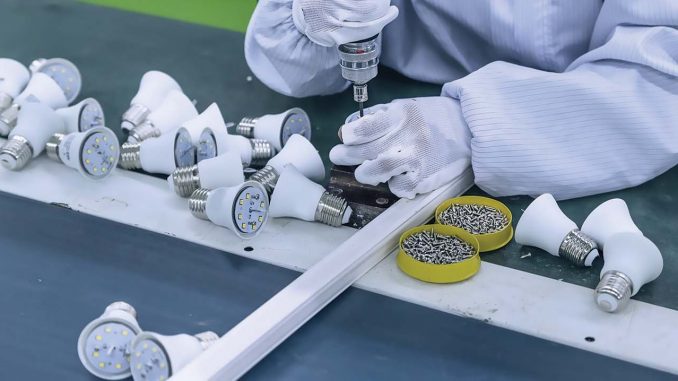
The Unnat Jyoti by Affordable LEDs for All (UJALA) programme, which was launched in January 2015 by Energy Efficiency Services Limited (EESL), gave a major impetus to the lighting industry. The main objective of UJALA is to promote efficient lighting. The programme replaced the Bachat Lamp Yojana, which was launched to distribute compact fluorescent lamps (CFLs) to households.
UJALA has a target to replace 770 million incandescent lamps with LEDs. More than 353 million bulbs have been sold under the programme so far. The finance minister recently stated that the scheme has led to annual savings of approximately Rs 183.41 billion. Further, a peak demand of 9,183 MW has been avoided and 37.1 million tonnes (mt) of carbon dioxide (CO2) emissions reduction has been achieved under the programme.
Power Line takes a look at the lighting industry’s key initiatives for achieving energy efficiency…
Lighting initiatives
The UJALA scheme has played an important role in driving conversion from older technology bulbs (CFLs and incandescent lamps) to LEDs. This programme is targeted at the residential sector. Large procurement volumes provided the critical mass the industry needed to ramp up local manufacturing of LED lamps and reduce costs. In the bulk procurement model adopted by UJALA, EESL procured LED lamps in bulk through competitive bidding and distributed them to end consumers. This resulted in a reduction in LED lamp prices, from about Rs 310 to Rs 38 per LED lamp in three years. In fact, the price of LED bulbs sold under the UJALA programme is almost half the price of LED bulbs sold through retail outlets in the country. This price difference is due to aggressive bidding by manufacturers and the exclusion of regular dealers and retailers from the programme. Retail market prices have, however, stabilised and may not go down further.
Multiple channels have been adopted for the distribution of LED lamps; for instance, through special kiosks set up at strategic locations including discom offices, post offices and petrol pumps.
Another key energy efficiency initiative in the lighting space has been the Street Light National Programme (SLNP). Launched in 2015, the SLNP aims to replace all 13.4 million conventional street lights across the country. As a part of this initiative, EESL has joined hands with the states, municipal bodies and urban local bodies to adopt a unique strategy wherein it invests in replacing conventional street lights with LEDs, with no upfront cost to the municipalities. This has made LED adoption smoother and more attractive.
So far, 9.5 million street lights have been replaced under this programme. About 6,423.04 MUs of energy have been saved per year, 4.42 mt of CO2 emissions has been avoided and about 1,070.51 MW of peak demand has been met through the SLNP.
Conclusion
The key challenges in LED adoption across the country have been pricing and availability. Cheap Chinese imports and inadequate demand have left domestic players with little incentive to manufacture LED lamps. However, with initiatives such as UJALA and SLNP, the LED lighting industry has seen a significant surge in the past few years. According to the Electric Lamp and Component Manufacturers’ Association of India (ELCOMA),the market for LEDs was valued at Rs 120 billion in value terms in 2018, registering a growth of 47 per cent over 2017. In volume terms, the LED market grew from 5 million in 2014 to more 669 million in 2018. In this period, the share of LEDs in the lighting market increased from less than 1 per cent to more than 46 per cent in volume terms. According to ELCOMA’s projections, the domestic LED market will reach Rs 261 billion by 2020.
Overall, the positive market response to government initiatives such as UJALA and the SLNP is expected to continue to drive the adoption of energy efficient lighting solutions.
